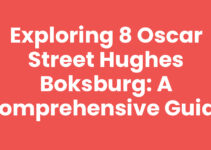Reiger Park, located in the vibrant city of Boksburg, South Africa, is a suburb that holds a rich historical tapestry woven through decades of cultural evolution. Initially developed during the gold rush in the late 19th century, Reiger Park has transformed from a primarily industrial area into a thriving community, complete with residential developments, parks, and educational institutions.
The History of Reiger Park: A Deep Dive
Understanding the history of Reiger Park means uncovering how it began, the changes it has undergone, and what it represents today. Here is a detailed walkthrough of its history:
1. Origins of Reiger Park
Originally part of the vast rural landscape of the East Rand, Reiger Park saw its inception in the early 1900s. The discovery of gold in the area prompted rapid development, attracting numerous workers and their families. This resulted in the establishment of residential areas that would later evolve into what we now recognize as Reiger Park.
2. Growth Through the 20th Century
The suburb’s population grew steadily throughout the 20th century, particularly during the mining boom. Schools were established to meet the increasing demand for education among the youth, as well as parks for recreation. With this growth came challenges, including urbanization, which brought about socio-economic changes that shaped the community.
3. Community and Culture
Today, Reiger Park is a multicultural hub that celebrates diversity. Various community organizations and cultural events have been established, reflecting the area’s rich history. The local residents actively participate in preserving the unique heritage of Reiger Park through festivals, arts, and outreach programs.
Key Attractions and Heritage Sites
As you explore the history of Reiger Park, you’ll find several key attractions that highlight its cultural heritage:
1. Historical Landmarks
Reiger Park features numerous buildings and sites that date back to its founding years. These landmarks represent the architectural styles of different eras, often showcasing the transition from colonial influences to more modern designs.
2. Parks and Recreational Areas
The suburb is home to several parks that not only provide recreational opportunities but also serve as venues for community gatherings and events. Notable parks include the Reiger Park Sports Complex, which hosts various sports and cultural activities.
3. Educational Institutions
The local educational institutions, including schools and vocational training centers, have played a pivotal role in the development and empowerment of the community. They serve as a testament to Reiger Park’s commitment to education and youth development.
Preservation of History and Future Prospects
Efforts to preserve the history of Reiger Park are ongoing, with local activists and historians working to document and celebrate its past. It’s essential for both current and future residents to appreciate and learn from the area’s rich cultural legacy.
Moreover, as urban development continues, balancing modernization with the preservation of historical sites will be crucial for maintaining the character of Reiger Park.
Conclusion
In summary, the history of Reiger Park is a remarkable journey through time that reflects the evolution of a community shaped by historical events, cultural diversity, and resilience. Understanding its past not only informs the heritage of its residents but also enriches the fabric of the broader South African narrative. Whether you’re a long-time resident, a new arrival, or just curious about this vibrant suburb, Reiger Park offers a unique glimpse into the stories of its people and places.
Frequently Asked Questions
What year was Reiger Park established?
Reiger Park began developing in the early 1900s during the gold rush.
What are some key features of Reiger Park today?
Reiger Park is known for its residential areas, schools, and parks that promote community engagement and cultural diversity.
How does Reiger Park preserve its history?
Local organizations and residents actively document and celebrate the suburb’s heritage through events, historical landmarks, and community programs.


